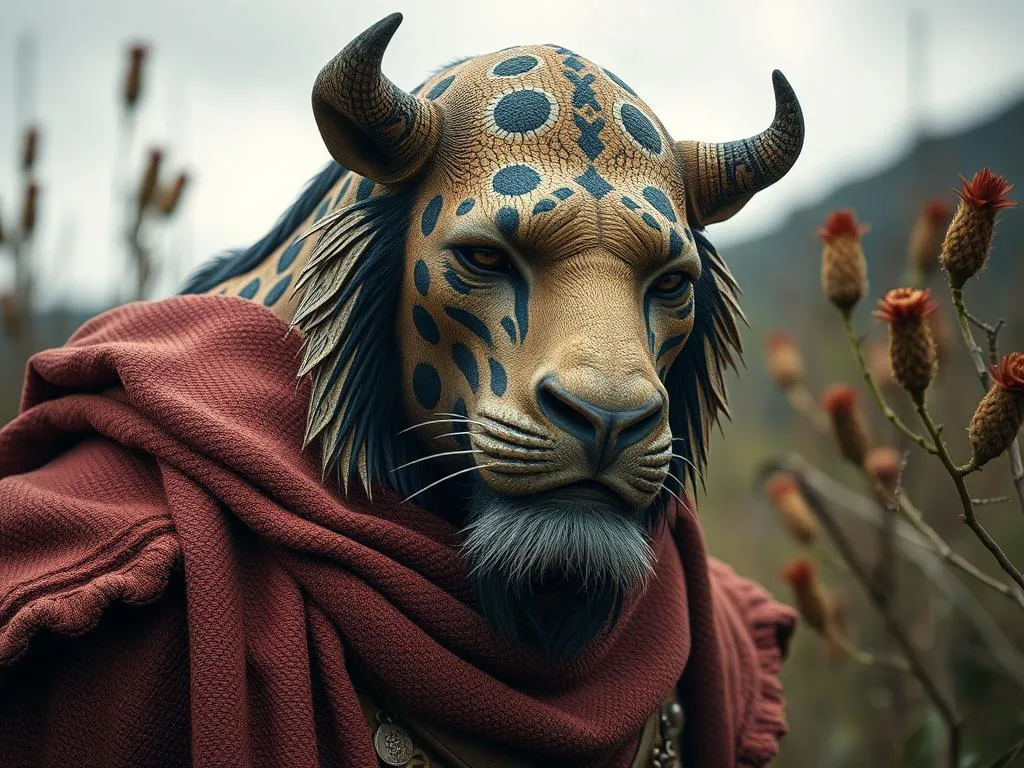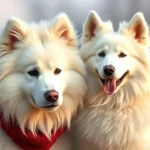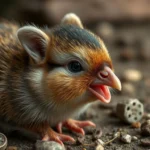
Introduction
When exploring the world of dog breeds, it’s essential to understand the unique characteristics, histories, and temperaments that distinguish one breed from another. This knowledge not only helps potential pet owners make informed decisions but also enriches the experience of dog ownership. Among the fascinating hybrids is the Labrakita, a delightful mix of the Labrador Retriever and the Akita. This article will dive deep into the Labrakita’s history, physical traits, temperament, care requirements, and much more, providing you with valuable insights into this unique breed.
Overview of Labrakita
History of the Labrakita
The Labrakita is a crossbreed that combines two distinct breeds with rich histories.
-
Labrador Retriever: Originating in Newfoundland, Canada, the Labrador Retriever was initially bred as a working dog, assisting fishermen by retrieving nets and fish. Over time, their friendly demeanor and trainability made them popular as family pets and service animals.
-
Akita: The Akita hails from Japan, where it was originally bred for hunting and guarding. Akitas are known for their loyalty and courage, often forming strong bonds with their families.
The Labrakita emerged as a designer breed, combining the friendly and energetic nature of the Labrador with the loyalty and protective instincts of the Akita. This hybrid typically inherits the best traits of both parent breeds.
Physical Characteristics
The Labrakita is known for its striking appearance, which can vary depending on the traits inherited from its parent breeds.
-
Size and Weight: Labrakitas generally weigh between 60 to 100 pounds and stand about 20 to 28 inches tall at the shoulder, depending on their genetic makeup.
-
Coat Color and Texture: The coat can range from a short, dense Labrador-like coat to a longer, fluffy Akita-like fur. Common colors include black, yellow, chocolate, and various shades of brindle.
-
Distinctive Features: Labrakitas often have a strong build with a broad head, expressive eyes, and a tail that can curl over the back or hang down, reflecting their Akita lineage. Their ears may be floppy like a Labrador’s or erect like an Akita’s.
Temperament
The Labrakita is known for its unique mix of temperament that stems from both parent breeds.
-
General Personality Traits: Labrakitas are typically friendly, loyal, and affectionate. They often exhibit a playful side, making them great companions for families.
-
Behavior with Children and Families: This breed is generally good with children, showcasing a protective nature while also being playful and gentle. Their loyalty makes them excellent family pets.
-
Socialization Tendencies with Other Pets: While Labrakitas can be sociable with other pets, early socialization is crucial to ensure they learn how to interact appropriately. Some may exhibit a stronger prey drive, especially if they take after their Akita parent.
Pros and Cons of Owning a Labrakita
Pros
Owning a Labrakita comes with several advantages:
-
Loyalty and Companionship: Labrakitas are known for their unwavering loyalty, often forming deep bonds with their families.
-
Intelligence and Trainability: Both parent breeds are intelligent, making Labrakitas relatively easy to train, especially with positive reinforcement methods.
-
Active and Playful Nature: Labrakitas thrive on activity, making them perfect companions for active individuals or families who enjoy outdoor adventures.
Cons
However, potential owners should also consider some challenges:
-
Exercise Needs and Energy Levels: Labrakitas require significant daily exercise to keep them happy and healthy. Failure to meet their energy needs can lead to destructive behaviors.
-
Potential Health Issues: Like all breeds, Labrakitas may inherit health concerns from their parent breeds, including hip dysplasia, obesity, and certain genetic conditions.
-
Grooming Requirements and Shedding: Depending on their coat type, Labrakitas may require regular grooming to manage shedding and maintain a healthy coat.
Care Requirements for Labrakita
Nutrition
To ensure a healthy and vibrant Labrakita, proper nutrition is vital.
-
Recommended Diet and Feeding Schedule: A balanced diet tailored to their age, size, and activity level is essential. Adult Labrakitas typically benefit from two meals a day.
-
Best Food Types for Labrakita: High-quality dog food, whether dry kibble or wet food, should contain real meat as the primary ingredient, along with vegetables and whole grains for balanced nutrition.
Exercise
Regular exercise is crucial for a Labrakita’s physical and mental well-being.
-
Daily Exercise Recommendations: Aim for at least 60 to 90 minutes of exercise daily. This can include walks, runs, or playtime in the yard.
-
Activities Suitable for Labrakita: Labrakitas enjoy a variety of activities, including fetch, agility training, and swimming. Engaging in different exercises can keep them stimulated and prevent boredom.
Grooming
Maintaining a Labrakita’s coat and hygiene is essential for their health.
-
Bathing Frequency: Regular bathing is recommended, but it should not be excessive to avoid stripping natural oils from their coat. Generally, bathing every 6 to 8 weeks is sufficient.
-
Brushing and Coat Care: Depending on their coat type, brushing may be required several times a week to manage shedding and keep the coat healthy.
-
Nail Trimming and Dental Care: Regular nail trimming is necessary to prevent overgrowth. Additionally, dental care, including brushing teeth and providing dental treats, helps maintain oral health.
Health Care
Regular health care is crucial for a Labrakita’s longevity.
-
Regular Veterinary Visits: Routine check-ups with a veterinarian are essential for monitoring health and catching any issues early.
-
Vaccination Schedule: Following a recommended vaccination schedule helps protect your Labrakita from common diseases.
-
Common Health Concerns: Be aware of potential health issues such as hip dysplasia, obesity, and skin conditions. Regular exercise and a proper diet can mitigate some of these risks.
Training a Labrakita
Basic Training Techniques
Training is a vital aspect of raising a well-behaved Labrakita.
-
Importance of Early Training: Starting training at a young age helps establish good behaviors and reinforces your role as the pack leader.
-
Positive Reinforcement Methods: Using treats, praise, and play as rewards encourages good behavior and strengthens the bond between you and your dog.
Socialization Skills
Socialization is key to a well-adjusted Labrakita.
-
Introducing to New Environments: Gradually exposing your Labrakita to new places, sounds, and experiences helps them become more adaptable and confident.
-
Interaction with Other Dogs and People: Regular playdates and visits to dog parks can help improve their social skills and reduce anxiety or aggression towards unfamiliar pets or people.
Advanced Training Options
For those interested in further training:
-
Agility Training: Labrakitas often excel in agility courses, providing both mental and physical exercise while strengthening the bond with their owner.
-
Service Dog Training Potential: With their intelligence and trainable nature, Labrakitas can be trained for various service roles, including therapy work.
Living with a Labrakita
Ideal Living Conditions
Understanding the living conditions suitable for a Labrakita is essential.
-
Space Requirements: Labrakitas thrive in homes with ample space. While they can adapt to apartment living, they require regular outdoor access for exercise.
-
Outdoor Access and Safety: A securely fenced yard is ideal, as Labrakitas enjoy running and playing outside. Ensure that any outdoor area is safe and escape-proof.
Family Compatibility
Labrakitas are generally friendly and adaptable, making them great family pets.
-
Suitability for Families with Kids: Their playful and protective nature makes Labrakitas excellent companions for children. Teaching kids how to interact with dogs respectfully enhances the experience for everyone.
-
Interaction with Other Pets: With proper socialization, Labrakitas can coexist peacefully with other pets, although early introductions are essential.
Lifespan and Aging
Understanding the aging process of a Labrakita helps in providing appropriate care.
-
Average Lifespan of a Labrakita: Labrakitas typically live between 10 to 15 years, depending on their health and care.
-
Caring for Senior Labrakita: As your Labrakita ages, keep an eye out for signs of arthritis or obesity. Adjusting their diet, exercise routine, and providing comfortable resting areas can improve their quality of life.
Conclusion
In summary, the Labrakita is a unique and lovable breed that embodies the best traits of both the Labrador Retriever and the Akita. With their loyalty, intelligence, and playful nature, they can make wonderful family pets. However, potential owners should consider their lifestyle and the specific needs of the breed, including exercise, grooming, and health care. With the right commitment and understanding, the Labrakita can be a joyful addition to any household.
FAQs about Labrakita
-
Are Labrakitas good with children?
Yes, Labrakitas are generally friendly and playful, making them great companions for children. -
How much exercise does a Labrakita need?
Labrakitas require at least 60 to 90 minutes of exercise daily to stay healthy and happy. -
Do Labrakitas shed a lot?
Yes, depending on their coat type, Labrakitas may shed moderately to heavily, requiring regular grooming. -
What health issues should I be aware of?
Potential health concerns include hip dysplasia, obesity, and skin conditions. Regular vet visits can help monitor these issues. -
Can Labrakitas be trained as service dogs?
Yes, due to their intelligence and trainability, Labrakitas can be trained for various service roles, including therapy work.









